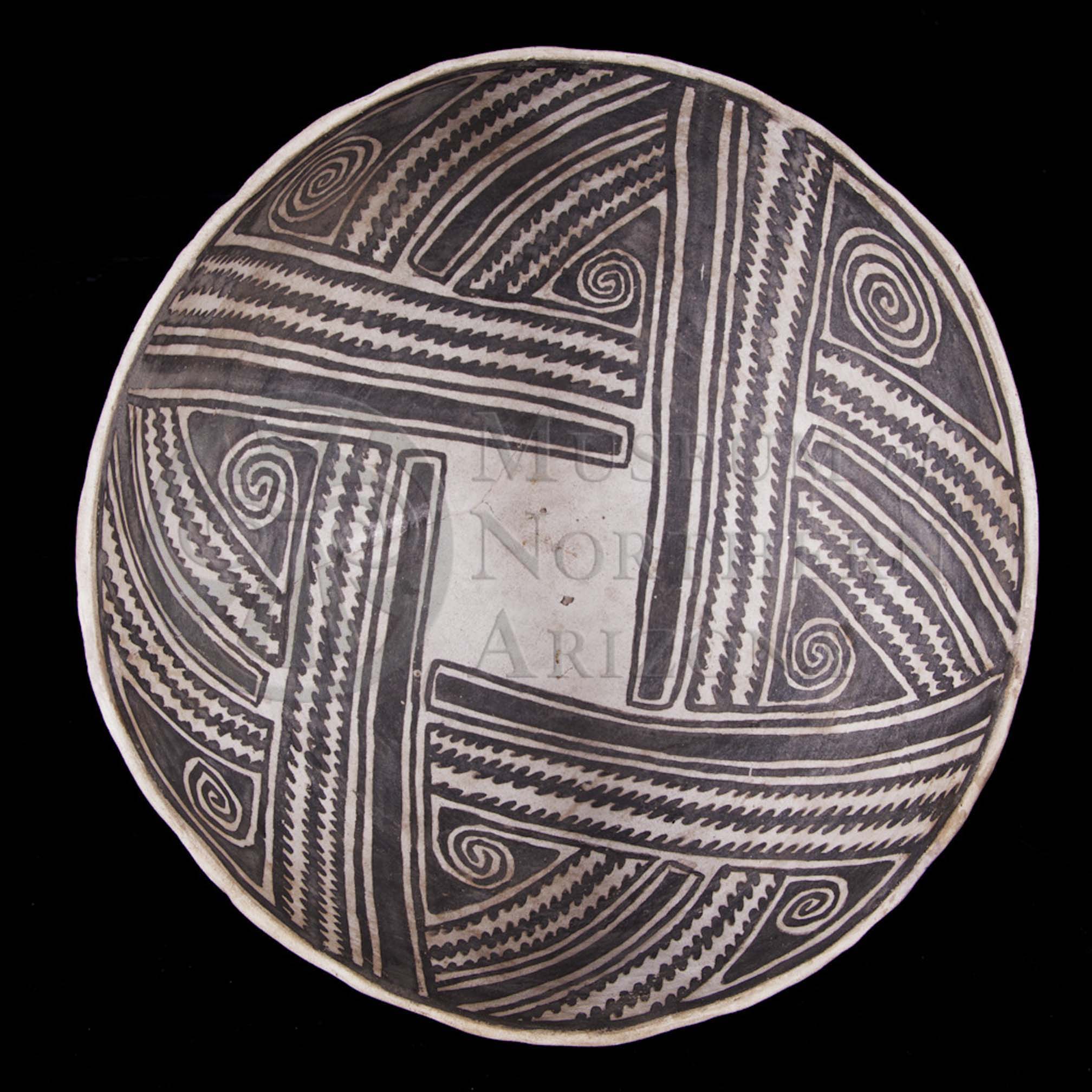
Tusayan Black-on-white bowl from the Museum of Northern Arizona collections. Click the image to open the Tusayan White Ware gallery.
Tusayan White Ware was the dominant decorated ware made by Kayenta potters, and was used alongside Tusayan Gray Ware. The principal difference between these two wares is that Tusayan White Ware vessels have smoothed surfaces as a base for black painted designs. Both wares were widely distributed, with Tusayan White Ware found in the area bounded by the Little Colorado River, the San Juan River to the north, Chinle Creek on the east, and the Colorado River on the west.
Types include: Black Mesa Black-on-white, Dogoszhi Black-on-white, Flagstaff Black-on-white, Kana’a Black-on-white, Kayenta Black-on-white, Sosi Black-on-white, Tusayan Black-on-white, and Wepo Black-on-white.
Date Range: A.D. 700-1350.
Construction: By coiling.
Firing: Fired in a reducing atmosphere.
Core Color: Light gray.
Temper: Fine to medium quartz sand in most types.
Surface Finish: Exterior jar/bowls coated with slip/wash; slip usually very thin; decorated surfaces polished; undecorated surfaces scraped or smoothed.
Surface Color: Bluish gray, pearl gray, or white.
Forms: Jar, bowls, dippers, colanders, and mugs.
Decoration:
- Paint: Black; fairly dense and dull; often watery with a brownish to purple color.
- Pigments: Carbon, sometimes with iron.
- Designs: Present in all types; usually on jar exteriors and bowl interiors.
Compiled from the following sources:
Colton, Harold S., and Lyndon L. Hargrave. (1937) Handbook of Northern Arizona Pottery Wares. Museum of Northern Arizona Bulletin 11, Flagstaff, Arizona.
Compiled by:
April Peters, Northern Arizona University Anthropology Laboratories
Additional Information:
Additional information for Tusayan White Ware can be found in the 2001 Northern Arizona University Ceramic Manual (link opens in new window).
